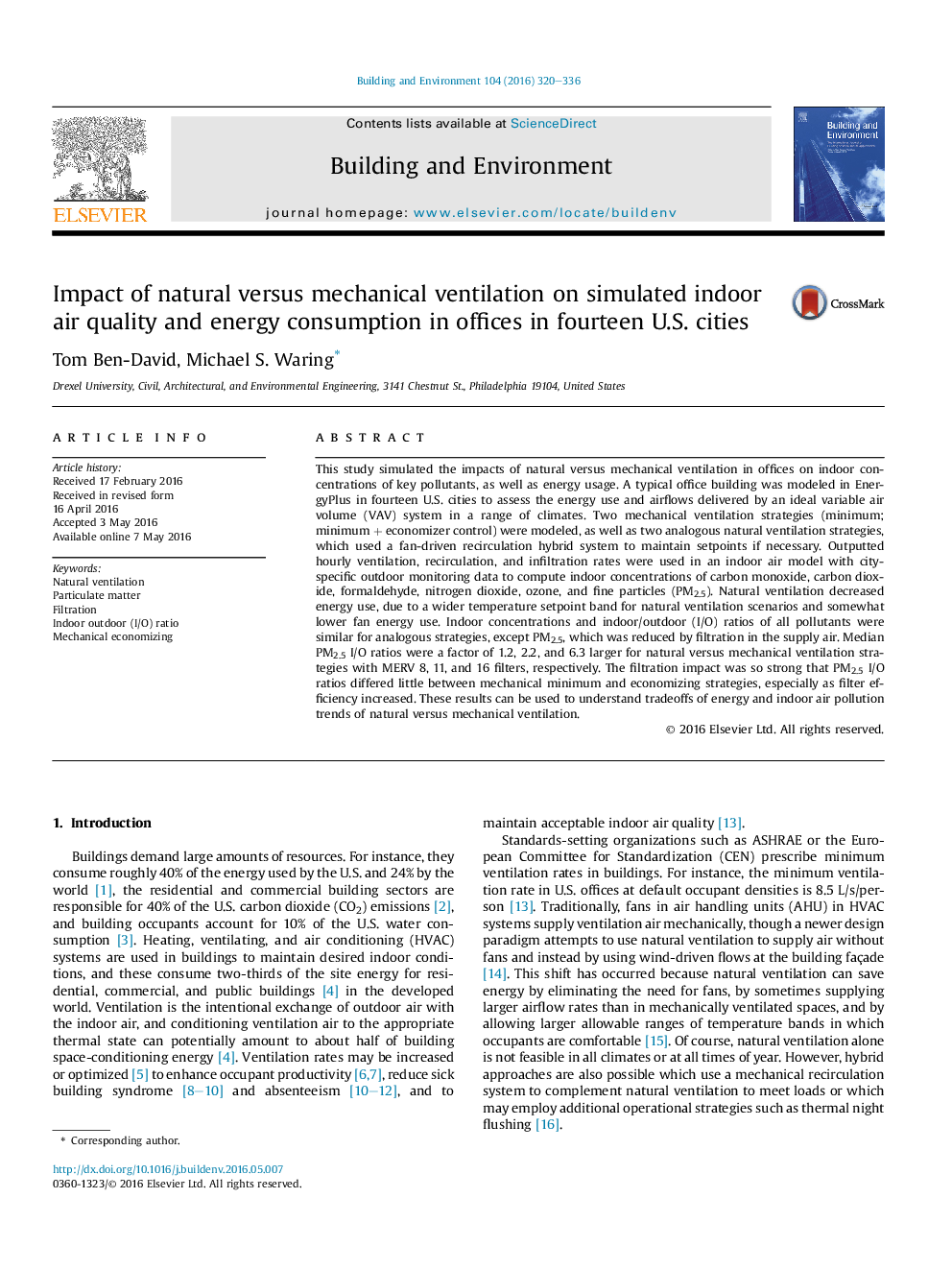| Article ID | Journal | Published Year | Pages | File Type |
|---|---|---|---|---|
| 6699238 | Building and Environment | 2016 | 17 Pages |
Abstract
This study simulated the impacts of natural versus mechanical ventilation in offices on indoor concentrations of key pollutants, as well as energy usage. A typical office building was modeled in EnergyPlus in fourteen U.S. cities to assess the energy use and airflows delivered by an ideal variable air volume (VAV) system in a range of climates. Two mechanical ventilation strategies (minimum; minimum + economizer control) were modeled, as well as two analogous natural ventilation strategies, which used a fan-driven recirculation hybrid system to maintain setpoints if necessary. Outputted hourly ventilation, recirculation, and infiltration rates were used in an indoor air model with city-specific outdoor monitoring data to compute indoor concentrations of carbon monoxide, carbon dioxide, formaldehyde, nitrogen dioxide, ozone, and fine particles (PM2.5). Natural ventilation decreased energy use, due to a wider temperature setpoint band for natural ventilation scenarios and somewhat lower fan energy use. Indoor concentrations and indoor/outdoor (I/O) ratios of all pollutants were similar for analogous strategies, except PM2.5, which was reduced by filtration in the supply air. Median PM2.5 I/O ratios were a factor of 1.2, 2.2, and 6.3 larger for natural versus mechanical ventilation strategies with MERV 8, 11, and 16 filters, respectively. The filtration impact was so strong that PM2.5 I/O ratios differed little between mechanical minimum and economizing strategies, especially as filter efficiency increased. These results can be used to understand tradeoffs of energy and indoor air pollution trends of natural versus mechanical ventilation.
Related Topics
Physical Sciences and Engineering
Energy
Renewable Energy, Sustainability and the Environment
Authors
Tom Ben-David, Michael S. Waring,
